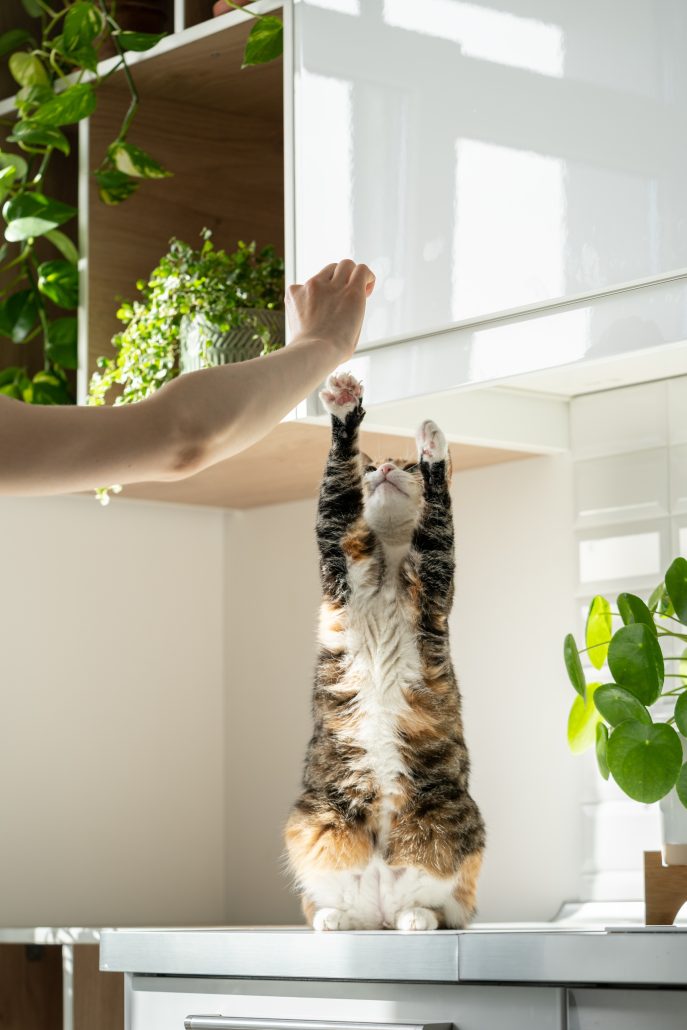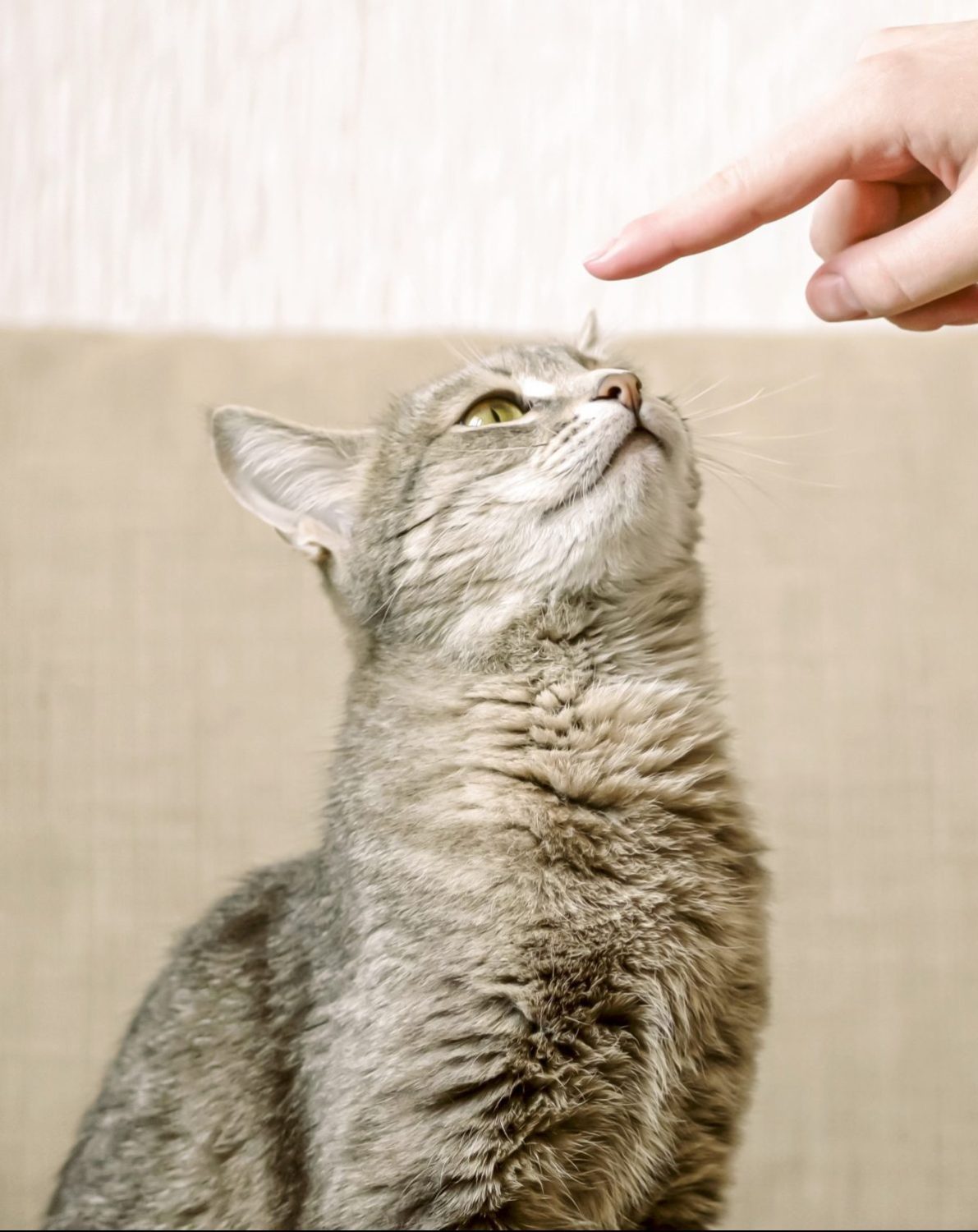When we bring a new puppy home, the first thing we often think of is training. This is often not the case for bringing a new cat home. While it is true that many cats are independent and aloof, it is very possible to train your feline friend!
Cats are extremely intelligent animals, and with the right techniques, praise and perseverance, you can teach your cat tricks and commands just like you would a dog. In this post, we discuss the basics of training your cat and some of the benefits to you and your feline friend.

Why You Should Train Your Cat
There are definite differences between the way cats and dogs are trained. Dogs have been bred for generations to work closely with humans, while cats have evolved to be more independent.
However, this does not mean that cats cannot be trained! In fact, there are several reasons why you should train your cat. At its core, training your cat is teaching them to associate desirable behaviour with a reward. Not only will this make your life easier, but helps your cat live a happier, healthier life.
Cat training provides positive mental and physical stimulation for cats, reducing anxiety, aggression, or other destructive cat behaviours.
Preparing For A Training Session
There are a number of factors to consider before beginning to train your cat. These include:
Stock up on Treats
Cats need motivation. Unlike dogs who are eager to learn and please their owners, cats can be stubborn and uncooperative. The best way to get your cat to focus and listen during a training session is with treats! Be sure to stock up on their favourite treats and cat food.
Keep Sessions Brief
Cats tend to have shorter attention spans then dogs and will quickly become bored if a training session is too long. It is important to keep your cat engaged by keeping sessions short, sweet and rewarding!
Eliminate Distractions
Cats often follow a daily routine. The best time to start a training session is after they wake up and before they eat. Here they will be ready to play and more likely to focus. They will also be hungry, thus more reward-focused.
To avoid confusion, use the same signals, voice and commands each time. This will help your cat learn quickly and efficiently.
Use Positive Reinforcement
The best way to train any animal is with positive reinforcement. This means rewarding your cat when they complete a desired behaviour. Never punish your cat as this will only lead to confusion, fear and mistrust.
Be Patient
You would not expect a puppy to sit, stay and come on their first day of training. The same goes for cats! Be patient and understanding as your cat learns. Like all animals, each cat is different and will learn at its own pace.

Common Training Methods
There are a host of different ways you can train your cat. The following are some common methods:
Clicker Training
Clicker training has been proven to be an effective training technique for cats and dogs alike. The goal with clicker training is for your cat to associate the clicking sound with a reward, and then further associate a new skill or desired behaviour with the click, so your cat knows they’ll be rewarded. This creates a cycle of reinforcement.
Hand Signals
This method is often used in combination with clicker training, but can be used on its own as well. The idea behind hand signals is to communicate with your cat non-verbally. This can be helpful if you have a deaf cat, or if you want to train your cat from a distance.
Vocal Cues
This refers to saying certain words to communicate certain commands. Much like hand signals, it is important to associate a world with behaviour and a reward. This can also be combined with clicker training to create a more powerful reinforcement.

Yes, cats can be trained!
While they may not be as eager to learn and please their owners as dogs, cats are still capable of learning new skills and behaviours.
The key is to find the right method, be patient, and most importantly – make it fun! Training your cat can be a rewarding experience for both you and your feline friend.
For more advice and assistance, The House Call Vet can help. Our passionate team can offer guidance on a range of topics regarding your feline friend’s health, including cat vaccinations, behaviour and training. Contact us today!

